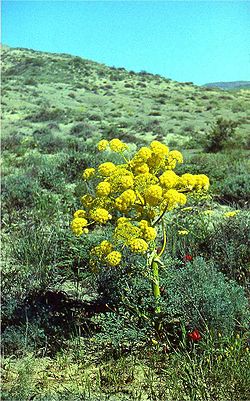COMPOUNDED ASAFOETIDA GRADING AND MARKING RULES
- Short title, application and commencement :-
(1) These rules may be called the Compounded Asafoetida Grading and Marking Rules, 1984.
(2) They shall apply to Compounded Asafoetida produced in India.
(3) They shall come into force from the date of their publication in the official Gazette.
- Definitions :- In these rules, unless the context otherwise requires:-
(1) “Agricultural Marketing Adviser” means the Agricultural Marketing Adviser to the Government of India
. (2) “Schedule” means a Schedule appended to these rules
(3) “Authorised packer” means a person or a body of persons who have been issued a Certificate of Authorisation under rules 3 of the General Grading and Marking Rules, 1937 in relation to compounded asafoetida.
- Grade designation:- The grade designation to indicate the quality of the compounded asafoetida shall be as set out in column 1 of Schedule I.
- Definition of quality :- The quality of the compounded asafoetida shall be as set out in columns 2to 6 of Schedule I against each grade designation.
- Grade designation mark :-
(1) The grade designation mark shall consist of a label, supplied by the Agricultural Marketing Adviser specifying the grade designation and bearing the design consisting of an outline map of India with the word ‘’ AGMARK’’ and the figure of the rising sun with the word “Produce of India” and “Hkkjrh; mRikn” resembling the mark as set out in Schedule II.
(2) The grade designation mark to be used on plastic container or tin container shall consist of a paste on label or lid specifying the commodity and grade designation.
(3) The grade designation mark to be used on B-twill jute bags shall consist of a rectangular tieon label specifying the commodity and grade designation. 6. Method of packing :-
(1) Compounded asafoetida shall be packed in sound, clean, dry plastic container or lacquered `tin container or B-twill jute bag with polythene lining or polythene bag or any other container as may be approved by the Agricultural Marketing Adviser from time to time. The net weight of the compounded asafoetida packed in a container shall be 5 gms, 10 gms, 15 gms, 20 gms, 25 gms, 50 gms, 100 gms, 200 gms, 500 gms, and kg and thereafter in multiples of 1 Kg.
(2) The container shall be securely closed and sealed in such a manner as may be approved by the Agricultural Marketing Adviser.
(3) Each package shall contain compounded asafoetida of the same grade designation.
- Method of Marking :-
(1) The grade designation mark shall be securely affixed to each container in a manner approved by the Agricultural Marketing Adviser.
(2) In addition to the grade designation, every container bearing a paste on label, tie-on label or lid printed with grade designation mark shall be clearly and indelibly marked with following particulars, namely:- (a) Name of the commodity, (b) Serial number of lot, (c) Month of packing. (d) Place of packing, (e) Name of the packer (f) Net weight, and (g) any other particular as may be specified by the Agricultural Marketing Adviser.
(3) The sale price of the commodity shall clearly be indicated on each container.
(4) Every container shall also indicate the approximate composition of edible starch or edible cereal flour used in compounding.
(5) An authorised packer may, after obtaining the prior approval of, and in a manner approved by the Agricultural Marketing Adviser, Mark his private trade mark on a container provide that the private trade mark does not represent quality or grade of compounded as asafoetida different from that indicated by the grade designation mark affixed to the container in accordance with these rules.
SCHEDULE-I (See rules 3 and 4)
Grade designations and definition of quality of Compounded as asafoetida (Bandhani Hing)
Definition of quality Special Characteristics
Grade designation ——————————————————————- General requirements
Total ash* *Ash insoluble Alcoholic *Moisture
Percent in dilute HCL extract percent
by weight weight with 90 by weight
percent of alcohol
_________________________________________________________________________
(Maximum) (Maximum) (Minimum) (Maximum
__________________________________________________________________________
Extra Special 6.0 1.00 10.0 12.0
Special 8.0 1.25 8.0 12.0
Standard 10.0 1.50 5.0 12.0
Regulation 5.9.29 Asafoetida
ASAFOETIDA (Hing or Hingra) means the oleogumresin obtained from the rhizome and roots of Ferula alliaces, Ferula rubricaulis and other species of Ferula. It shall not contain any colophony resin, galbonum resin, ammoniaccum resin or any other foreign resin. Hing shall conform to the following standards, namely:
- Total ash content shall not exceed 15 per cent by weight.
- Ash insoluble in dilute hydrochloric acid shall not exceed 2.5 per cent by weight.
- The alcoholic extract (with 90 per cent alcohol) shall not be less than 12 per cent as estimated by the U.S.P. 1936 method.
- Starch shall not exceed 1 per cent by weight.
Hingra shall conform to the following standards namely:-
- The total ash content shall not exceed 20 per cent by weight.
- Ash insoluble in dilute hydrochloric acid shall not exceed 8 per cent by weight.
- The alcoholic extract (with 90 per cent alcohol) shall not be less than 50 per cent as estimated by the U.S.P. 1936 method.
- Starch shall not exceed 1 per cent by weight.
Compounded asafoetida or Bandhani Hing is composed of one or more varieties of asafoetida (Irani or Pathani Hing or both) and gum arabic, edible starches or edible cereal flour.
It shall not contain:-
- more than 10 per cent total ash content,
- more than 1.5 per cent ash insoluble in dilute hydrochloric acid,
- less than 5 per cent alcoholic extract, (with 90 per cent of alcohol) as estimated by the U.S.P. 1936 method.



